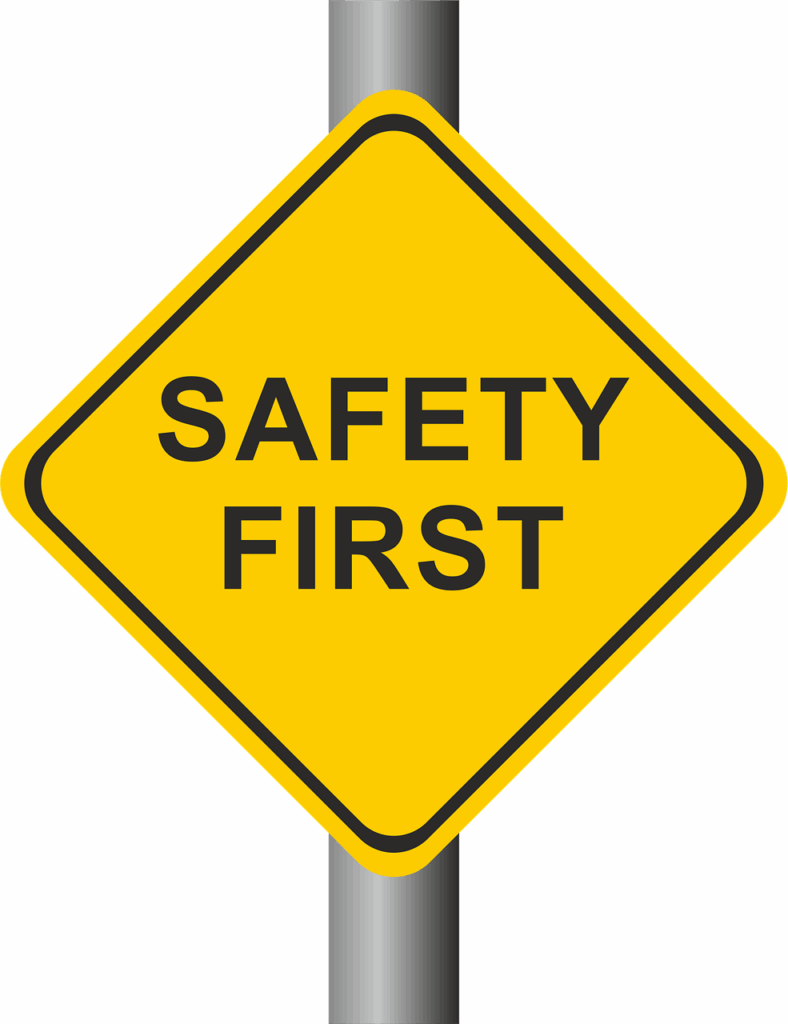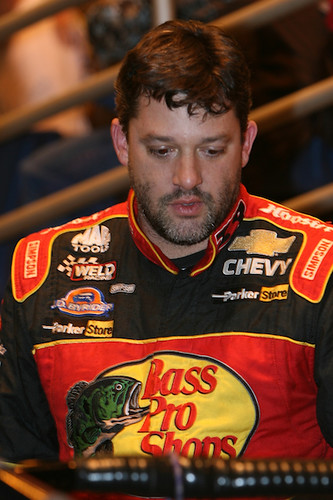
A terrifying high-speed collision involving two of drag racing’s titans, Tony Stewart and Doug Kalitta, sent shockwaves through the motorsport community this past Sunday at the NHRA Reading Nationals. The incident, which unfolded during the second round of eliminations, saw both Top Fuel dragsters involved in a massive, violent wreck. While both drivers thankfully emerged uninjured, the intensity of the crash and Stewart’s subsequent memory loss have underscored the inherent dangers and remarkable safety innovations within the sport.
Tony Stewart, a 54-year-old NASCAR legend still actively competing in the NHRA circuit, found himself in a harrowing situation after Doug Kalitta’s vehicle suffered a front left tire malfunction. The subsequent impact careened Stewart’s dragster onto its side and into the concrete guardrail, a sight that left spectators and fellow racers gasping. Despite the visible trauma to the vehicles, the rapid response of safety crews and the robust design of the dragsters played a pivotal role in ensuring the drivers’ well-being.
This in-depth look explores the dramatic events of that Sunday, dissecting the moments leading up to the collision, the immediate aftermath, and the personal accounts from the drivers involved. From the specifics of the mechanical failure to Stewart’s disoriented recollections and the initial medical assessments, we delve into the details of a crash that, while severe, ultimately highlighted the incredible resilience of its participants and the continuous advancements in motorsport safety.
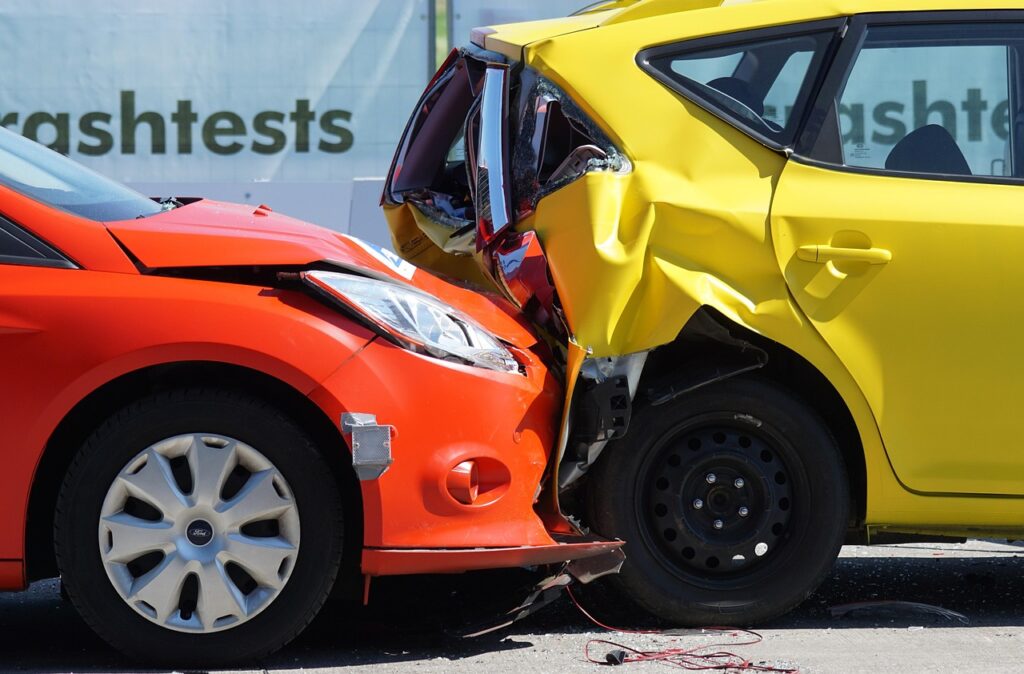
1. **The High-Speed Collision: Stewart and Kalitta’s NHRA Crash**
The motorsport world held its breath on Sunday as Tony Stewart and Doug Kalitta were involved in a terrifying high-speed collision during the NHRA Reading Nationals. This massive, violent incident occurred between the two Top Fuel racers, a class known for its incredible speeds and raw power. Fans tuned into the NHRA action, rather than NFL Sunday, witnessed a dramatic spectacle that highlighted both the thrilling nature and the inherent risks of professional drag racing.
The incident unfolded in Round 2 of eliminations at Maple Grove Raceway in Mohnton, Pennsylvania. Kalitta, piloting the MacTools38 Top Fuel Dragster, was pitted against Stewart, who was filling in for his wife, Leah Pruett. After crossing the finish line, the unthinkable happened as Kalitta’s dragster veered dangerously across the center line, leading to a catastrophic collision with Stewart’s vehicle. The impact was described as a “violent hit,” underscoring the sheer force involved.
The collision sequence was particularly dramatic, with Stewart’s dragster momentarily turning onto its side before crashing into the concrete guardrail. Visuals from Kalitta’s team, shared on social media, depicted the severity of the wreck, showing both vehicles coming to a halt far from their intended stopping points. Despite the harrowing nature of the crash, the primary concern immediately shifted to the condition of the drivers, who, remarkably, both emerged from the wreckage under their own power.
NHRA footage provided another look at the wreck, illustrating the critical moment “after the race is over and the drivers are hoping to just get these cars stopped safely.” The chaotic scene, with two top-tier dragsters mangled and off-course, served as a stark reminder of the fine line between victory and disaster in such a high-stakes sport. The collective sigh of relief from the racing community was palpable as both Stewart and Kalitta were confirmed to be alert and on their feet.
2. **The Stage: Reading Nationals and the Countdown to the Championship**
The dramatic collision involving Tony Stewart and Doug Kalitta took place at a pivotal point in the NHRA season: the Reading Nationals, held at Maple Grove Raceway in Pennsylvania. This event is not just another race; it’s a critical component of the NHRA’s Countdown to the Championship. For drivers like Stewart and Kalitta, every round, every win, and every point is crucial in their quest for the coveted season title, adding an immense layer of pressure and significance to each run.
The Reading Nationals presented by Nitro Fish at Maple Grove Raceway is a renowned venue on the NHRA calendar, known for its fast track conditions that often lead to record-setting speeds. The stakes were particularly high for Tony Stewart, who was “fresh off winning the regular season championship.” His participation in the Countdown to the Championship underscored his commitment and prowess in the Top Fuel category, even as he navigates a diverse racing career that spans multiple disciplines.
Being part of the “Countdown to the Championship” means that every elimination round carries magnified importance, with points leaders battling fiercely for supremacy. The second round, where this incident occurred, is far too early for any competitor to want their championship hopes jeopardized. For Kalitta, who would later continue in eliminations, the immediate aftermath of the crash presented a daunting challenge not only to his vehicle but also to his mental fortitude in a championship pursuit.
The context of the “Countdown to the Championship” elevates the narrative surrounding this crash from a mere accident to a significant event with potential implications for the season standings. It highlights the fierce competition and the razor-thin margins that define Top Fuel drag racing, where mechanical perfection and driver skill are paramount. The fact that such a severe incident could occur in such a crucial phase of the season only amplified the concern and attention from fans and media alike.

3. **The Cause: Unpacking Doug Kalitta’s Front Tire Malfunction**
At the heart of the terrifying collision was a critical mechanical failure on Doug Kalitta’s dragster. According to Kalitta’s team and NHRA statements, a “front left tire malfunction” was the direct cause of his vehicle losing control. This mechanical issue occurred “just before the 1,000-foot marker,” a crucial point in the run where dragsters are reaching their peak speeds and drivers are typically deploying parachutes to safely slow down.
The nature of the malfunction was described by the NHRA as the front suspension appearing to have a failure, which consequently “folded the wheel over at 335 mph.” This catastrophic failure at such an extreme speed rendered the veteran driver “unable to control its trajectory.” The sudden loss of steering control meant Kalitta’s dragster, traveling at an astonishing 335.73 MPH, veered uncontrollably across the centerline and directly into Tony Stewart’s lane.
Doug Kalitta himself confirmed the issue, stating, “The left front tire blew or went down.” He further elaborated on the suddenness of the event: “It just happened so quick that there was nothing I could really do.” This emphasizes the instantaneous and uncontrollable nature of the mechanical failure, leaving no time for the driver to react or mitigate the impending collision. The incident serves as a stark reminder of the immense pressures placed on equipment in Top Fuel racing.
The detailed attribution of the crash cause to a specific mechanical failure is crucial for understanding the event objectively. It highlights that even with meticulous preparation and advanced engineering, the extreme forces and speeds in drag racing can lead to unforeseen equipment malfunctions. The incident, therefore, becomes not just a story of a crash, but also a case study in the relentless pursuit of safety and reliability in a sport that constantly pushes the boundaries of mechanical endurance.
4. **Race Outcome: Kalitta’s Win Despite the Catastrophe**
In a peculiar and almost paradoxical twist to the dramatic events at the Reading Nationals, Doug Kalitta actually won the drag race against Tony Stewart. The official results confirmed that Kalitta posted a blistering 3.787 seconds at 335.73 mph, narrowly defeating Stewart’s run of 3.809 seconds at 326.71 mph. This outcome means that despite the catastrophic collision that immediately followed, Kalitta had technically crossed the finish line first and secured the victory in that specific heat.
The context of a drag race is unique, where the winner is determined by who crosses the finish line first, regardless of what happens moments later during the deceleration phase. Kalitta’s speed of 335.73 mph at the trap, combined with his faster elapsed time, solidified his win. This fact was acknowledged by Kalitta’s team on social media, noting his win “over T. Stewart’s 3.809 at 326.71mph,” before detailing the tire malfunction that led to the crash.
While the win itself might seem secondary given the severity of the wreck, it has significant implications for the “Countdown to the Championship.” For Kalitta, this victory allowed him to continue in eliminations, a testament to NHRA regulations that permit a driver to pull a backup chassis. This rule meant that despite the destruction of his primary dragster, Kalitta’s win enabled him to remain in contention for the overall championship, demonstrating the resilience built into the sport’s structure.
The unusual scenario of winning a race and then immediately being involved in a violent crash underscores the split-second nature of Top Fuel drag racing. Drivers push their machines to the absolute limit, and sometimes, the consequences of those limits are realized just after the race’s official conclusion. It adds a layer of bittersweet irony to the outcome, where a hard-fought victory was instantly overshadowed by a terrifying incident, yet still carried forward momentum in the championship chase.
5. **Stewart’s Stunned Reaction: “I Don’t Remember Any of It”**
Perhaps one of the most concerning aspects of the crash, beyond the visible destruction, was Tony Stewart’s profound memory loss regarding the incident. In interviews conducted in the immediate aftermath, Stewart was candid about his inability to recall the collision. “I don’t have a damn clue, honestly. I don’t remember any of it,” he stated, via Kelly Crandall of RACER, a sentiment he echoed to Fox Sports 1’s Bruno Massel: “I honestly don’t remember any of it.”
Stewart further elaborated on his disoriented state, stating, “The first thing I remember, they’re waking me up here. Not sure what happened. It appears to be pretty massive.” His confusion was palpable, as he admitted, “I’m as curious as everybody else is to what happened. I just know that we’re not where we’re supposed to be at the end of a run here. So, just confused.” This honest admission painted a clear picture of the traumatic impact the crash had on him, physically and cognitively.
The fact that Stewart had to be assisted from his race car by the NHRA Safety Safari and that he spoke of being “woken up” highlights the severity of the G-forces and impact he sustained. While he appeared to be alert and on his feet shortly after, the temporary amnesia is a significant indicator of a concussion or head trauma. This aspect of the crash immediately brings into focus the crucial concern for head injuries in motorsport, prompting questions about his short-term and long-term health.
Stewart’s bewilderment and inability to recall the event stood in stark contrast to the vivid footage of the wreck. His public statements emphasized the disorientation and the blank slate of his memory concerning the actual moments of impact. This candid revelation not only provided a personal dimension to the otherwise objective reporting of the crash but also served as a powerful reminder of the hidden toll that high-speed collisions can take on even the most seasoned athletes.

6. **Physical Aftermath: Stewart’s Headache and Banged Hand**
Beyond the dramatic visible damage to his dragster and his unsettling memory loss, Tony Stewart also reported specific physical injuries, albeit minor given the magnitude of the crash. Following the incident, he recounted, “I got one hell of a headache and banged my left hand up.” While these injuries might seem relatively minor in the context of a 335 mph collision, they underscore the immediate physical toll taken on the driver’s body despite the advanced safety features of the vehicle.
The “hell of a headache” is particularly noteworthy, often serving as a key symptom of concussion or head trauma. This aligns with his admission of memory loss and being “woken up” by safety crews. Such an impact, even with a helmet and head-and-neck restraints, can jolt the brain, leading to immediate post-concussion symptoms. The concern for head injuries is always paramount in motorsport, and Stewart’s description quickly brought this into focus for medical staff and fans alike.
His “banged my left hand up” indicates a direct impact or contusion to his hand, likely from the steering wheel or cockpit elements during the violent collision. While not a severe injury like a fracture, it points to the chaotic forces at play within the cockpit as the dragster spun and impacted the wall. These specific, reported injuries provide concrete evidence of the physical trauma endured, even as the primary relief was that he was able to exit the car under his own power.
Both Tony Stewart and Doug Kalitta were promptly examined onsite by NHRA Chief Medical Officer Dr. Surface, and both were subsequently released. This swift medical evaluation and clear bill of health, despite Stewart’s reported injuries and memory issues, spoke volumes about the effectiveness of the NHRA’s safety protocols and the robust construction of Top Fuel dragsters, which are designed to absorb and dissipate immense impact forces to protect the driver.
7. **Stewart’s Comparison to Sprint Car Crashes**
Despite the immediate visible damage to his dragster and his unsettling memory loss, Tony Stewart quickly offered a perspective on the NHRA crash by comparing it to his extensive experience in sprint car racing. He stated to Kelly Crandall of RACER, “I’ve been through sprint car crashes way worse than this, I’m pretty sure. We’re good. We’re good, we’re fine. I promise, we’re fine.” This seasoned outlook, coming from a driver with decades of experience across multiple disciplines, offered a unique lens through which to view the terrifying incident.
Stewart’s assertion that the NHRA crash was “not the worst hit he’s ever taken while racing” highlighted the distinct characteristics and differing impact forces found across various motorsport categories. While drag racing involves extreme straight-line speeds, sprint car racing is renowned for its inherent dangers, often involving open-wheel vehicles and intense jostling on dirt tracks, leading to spectacular and frequently severe accidents.
Experts and fellow racers consistently concur with Stewart’s assessment regarding the brutality of sprint car wrecks. It is widely acknowledged that these incidents, often involving big tumbles, can result in significant injuries, including “broken bones, fracture spines, and more.” His survival of numerous such events underscores his resilience and the robustness of safety equipment across his diverse racing career.
This comparison served to underscore Stewart’s veteran perspective and perhaps his coping mechanism for such traumatic events. While the visual evidence of the dragster crash was alarming to spectators, his calm comparison to previous, more devastating experiences reassured many about his overall well-being despite the immediate confusion and memory loss.

8. **Kalitta’s Perspective on the Event**
Doug Kalitta, the other highly experienced driver involved in the collision, provided his candid account of the sudden mechanical failure that initiated the incident. Kalitta confirmed the root cause of the crash, stating, “The left front tire blew or went down.” This immediate and definitive explanation from the veteran driver clarified the critical mechanical issue that precipitated the chain of events.
Kalitta further described the speed and instantaneous uncontrollability of the event, emphasizing to NHRA on FOX, “It just happened so quick that there was nothing I could really do.” His statement conveyed the immediate and overpowering nature of the tire malfunction at a staggering 335.73 mph, leaving no opportunity for a corrective action from the cockpit.
Despite the significant damage to his MacTools38 Top Fuel Dragster and the terrifying nature of the crash, Kalitta expressed palpable relief for the well-being of both drivers. “Fortunately, Tony and I are good, and that’s really the main thing,” he remarked, prioritizing driver safety above all else. His quick acknowledgment of their uninjured status offered immediate reassurance to the racing community and his team.
The veteran driver also categorized this incident as one of the most severe he has experienced in his long and distinguished career. “That’s probably the worst [crash] that I’ve had [in my career],” Kalitta admitted. He added, “I’ve been very fortunate over the years, but it’s all part of it,” indicating a stoic acceptance of the inherent risks involved in elite-level motorsport.
9. **The Prompt Medical Response**
Following the violent high-speed collision, the NHRA’s comprehensive safety protocols were immediately activated, leading to a prompt and highly efficient medical and recovery response. Tony Stewart, visibly shaken and disoriented, required assistance from the specialized “NHRA Safety Safari” to carefully exit his heavily damaged race car. This rapid intervention is a critical component of motorsport safety, designed to ensure drivers receive immediate attention and assistance.
Stewart was observed “moving slowly with the assistance of safety crews,” a standard and cautious procedure after such a high-impact incident. The primary objective is to carefully extract the driver from the cockpit, minimizing any potential for further injury, especially when disorientation, pain, or suspected trauma is present. This methodical approach underscores the thoroughness of onsite emergency personnel.
Both drivers, Stewart and Kalitta, were quickly examined by “NHRA Chief Medical Officer Dr. Surface” directly at the trackside. This immediate onsite evaluation is meticulously designed to assess any potential injuries, particularly concussions or head trauma given the immense G-forces involved, and to determine a driver’s fitness to continue competition or their need for further medical attention.
Despite the severity of the crash and Stewart’s reported memory loss and headache, both drivers were ultimately “released” by Dr. Surface, indicating no immediate life-threatening or severe injuries that required hospitalization. The fact that both were reported “alert and on their feet” shortly after such a massive impact spoke volumes about the efficacy of modern NHRA safety protocols and equipment.
Read more about: A Perilous Miscalculation: When Pirates Attacked the Unyielding Power of Warships and Faced Swift Defeat
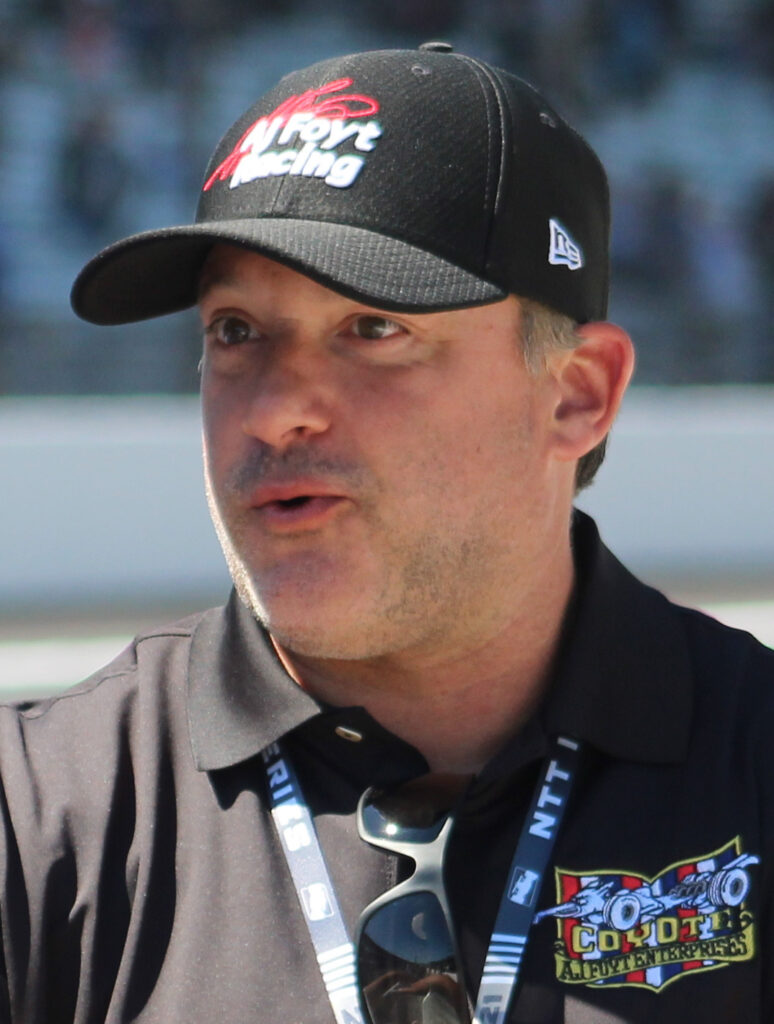
10. **Stewart’s Unique Role as a Substitute Driver**
Tony Stewart’s presence in the Top Fuel dragster at the Reading Nationals was not as a full-time, season-long participant, adding a unique dimension to his involvement. He was specifically positioned as a substitute driver, “filling in for his wife, Leah Pruett,” who had temporarily stepped away from competition to celebrate the arrival of their first son, Dominic, earlier in the year.
Despite his substitute status, Stewart’s involvement in the Top Fuel category was far from casual or ceremonial. The “NASCAR legend,” at 54 years old, had already demonstrated significant prowess and commitment in the NHRA circuit, being “fresh off winning the regular season championship.” His performance underscored his rapid adaptation and formidable skill in a discipline distinct from his traditional NASCAR roots.
Stewart’s participation in the crucial “Countdown to the Championship” as a fill-in driver further highlighted his unwavering dedication to the team and to the sport. It also showcased his commitment to maintaining a competitive edge, even while navigating a diverse racing career that spans multiple high-speed disciplines. His entry into such a critical phase of the season emphasized his formidable talent and willingness to compete at the highest levels.
This incident, therefore, added another layer of complexity and drama to Stewart’s unconventional role. While effectively filling in for his wife, he found himself in one of the most violent crashes of the season, a stark reminder that even a temporary stint in a high-stakes, high-speed environment carries inherent and unpredictable risks for any driver, regardless of their decorated past.
11. **The Critical Role of Dragster Safety Engineering**
The fact that both Tony Stewart and Doug Kalitta emerged from the catastrophic 335 mph collision largely uninjured is a powerful testament to the advanced safety engineering inherent in modern Top Fuel dragsters. The “robust design of the dragsters” played a pivotal role in protecting the drivers, even as their vehicles sustained massive structural trauma, as noted by Stewart himself.
Stewart publicly acknowledged the critical role of vehicle construction following the incident. He expressed his relief, stating, “Looking at Doug’s car and my car, I’m glad PBRC builds our cars, because we have safe race cars, obviously.” This direct endorsement from a driver who had just survived a violent wreck underscored the profound trust placed in the engineering and manufacturing of these purpose-built, high-performance machines.
Top Fuel dragsters are meticulously designed to “absorb and dissipate immense impact forces,” channeling energy away from the driver’s compartment. Components like advanced composite materials, strategically engineered crush zones, robust roll cages, and sophisticated head-and-neck restraint systems work in concert to create a survival cell. This intricate system proved effective in this incident, allowing both drivers to “emerge from the wreckage under their own power.”
The continuous advancements in motorsport safety were strikingly on full display at the Reading Nationals. From the sophisticated chassis construction to the specialized safety gear worn by drivers and the rapid deployment of safety crews, every element is engineered to mitigate risk in a sport that constantly pushes boundaries. This incident, while harrowing, ultimately served as a real-world demonstration of how these innovations perform under extreme conditions, ensuring “the drivers’ well-being.”
Read more about: Ford GT Mk IV: The Final, $1.7M Track-Only 800+HP Supercar
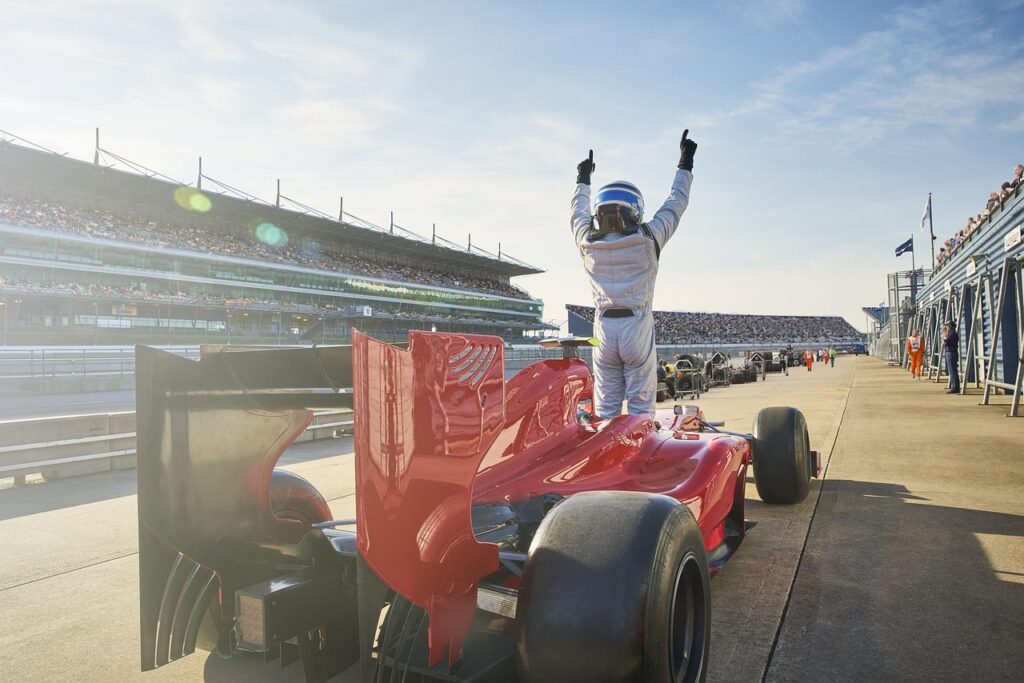
12. **Kalitta’s Remarkable Return to Competition**
In a display of remarkable resilience and adherence to NHRA regulations, Doug Kalitta was able to return to competition despite his primary dragster being destroyed in the severe crash with Tony Stewart. The official win in Round 2 against Stewart, despite the immediate aftermath, allowed him to “continue in eliminations,” a crucial outcome for his championship aspirations.
NHRA rules contain provisions that permit a driver to “pull a backup chassis” if their primary vehicle is incapacitated during a race where they have advanced. This regulation proved vital for Kalitta, enabling him to remain in contention for the coveted “Countdown to the Championship,” serving as an example of the structural resilience built into the sport’s framework.
In an astonishing feat of determination and rapid teamwork, Kalitta returned to the track “just over an hour later” after the severe accident. He then went on to defeat rival Steve Torrence, posting a blistering 3.81-second run to Torrence’s 3.83. This victory was pivotal, as it allowed Kalitta to “assume the points lead and advance to the final round” of the Reading Nationals.
Kalitta’s swift and successful return to racing, immediately following one of the worst crashes of his career, underscored the profound mental toughness and focus required in Top Fuel drag racing. It also highlighted the dedication and efficiency of his crew in preparing a backup car quickly, ensuring their driver could capitalize on his hard-won Round 2 victory and continue his pursuit of the season title.
**A Testament to Resilience and Safety**
The harrowing incident at the NHRA Reading Nationals, while deeply unsettling and a stark reminder of motorsport’s inherent dangers, ultimately highlighted critical aspects of top-tier racing. From the immediate, expert response of safety crews and medical personnel to the robust engineering of modern dragsters and the remarkable resilience of seasoned drivers like Tony Stewart and Doug Kalitta, the event served as a powerful demonstration of continuous commitment to safety within the sport. As the NHRA season progresses, the memory of this high-speed collision will likely serve as a poignant reminder of the fine line between triumph and adversity on the drag strip, reinforcing the deep respect held for these athletes and their purpose-built machines.






